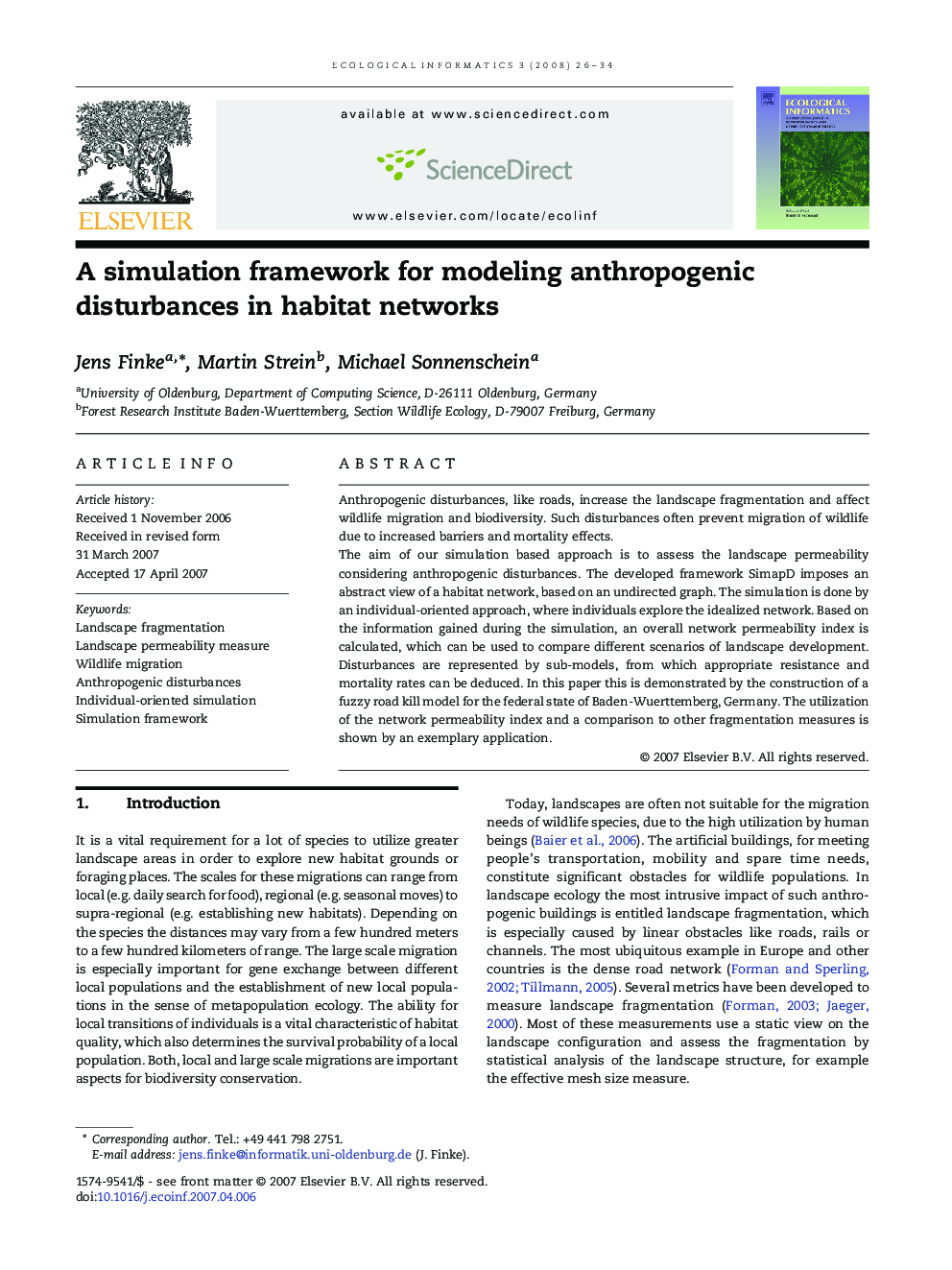| Article ID | Journal | Published Year | Pages | File Type |
|---|---|---|---|---|
| 4375353 | Ecological Informatics | 2008 | 9 Pages |
Anthropogenic disturbances, like roads, increase the landscape fragmentation and affect wildlife migration and biodiversity. Such disturbances often prevent migration of wildlife due to increased barriers and mortality effects.The aim of our simulation based approach is to assess the landscape permeability considering anthropogenic disturbances. The developed framework SimapD imposes an abstract view of a habitat network, based on an undirected graph. The simulation is done by an individual-oriented approach, where individuals explore the idealized network. Based on the information gained during the simulation, an overall network permeability index is calculated, which can be used to compare different scenarios of landscape development. Disturbances are represented by sub-models, from which appropriate resistance and mortality rates can be deduced. In this paper this is demonstrated by the construction of a fuzzy road kill model for the federal state of Baden-Wuerttemberg, Germany. The utilization of the network permeability index and a comparison to other fragmentation measures is shown by an exemplary application.
